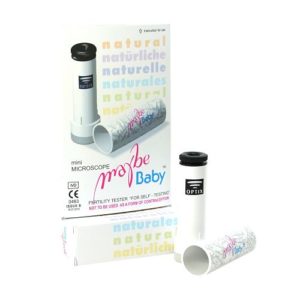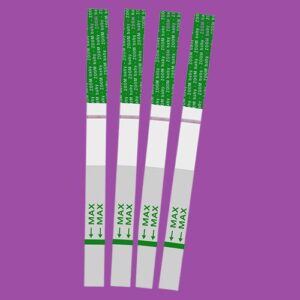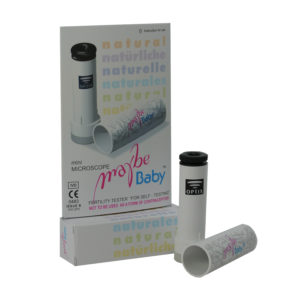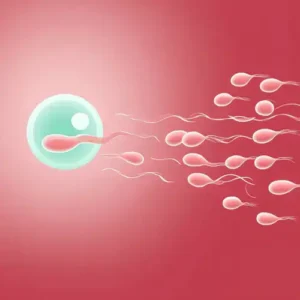During each of her menstrual cycle, a woman’s fertility occurs within only a few numbers of days. Since her egg life span is only a short duration of 24 hours, prediction of her ovulation is crucial to conception. When I worked with some of my patients, I recommend certain various practices and methods, one of which is the maintenance of a fertility chart on daily basis.
Fertility charting can be used by a woman for monitoring the wellness of her reproductive system, for understanding the nuances of her menstrual cycle and for correct identification of the time she has the highest chance of conceiving. Examining various variables in a woman’s physiology, she can be taught how to discover her most probable ovulation days, that is the most favourable time she can conceive a baby.
As part of daily fertility charting routine, I have told my patients to add the use an ovulation microscope – an evaluation standard for the prediction of a woman’s most fertile time.
How Does the Ovulation Microscope Work?
This handy device is used to monitor and predict a woman’s fertility through the detection of changes which occur to her hormone before and during her ovulation. As a woman’s ovulation date approaches, she begins to experience a gradual rise in a hormone called estrogen. This “surge” in estrogen easily makes her to have more saliva salinity, resulting in qualitative changes her saliva structure which is seen as the distinct crystalline formations usually called ferning or ferns which can be observed in an ovulation microscope.
These crystal-like patterns resembling frost formed on a window pane are an indication of the occurrence of an estrogen surge – an ovulation precursor. If the result is positive (that is, ferning pattern is observed) ovulation will probably occur in 24-72 hours.
Detecting the Luteinising Hormone Surge
In addition to tracking changes in oestrogen, ovulation prediction kits can also detect surges in luteinizing hormone (LH). The LH surge triggers the release of an egg from the ovaries within 24-48 hours.
Urine ovulation test strips work by detecting this LH surge. The urine collected in the morning is optimal, as LH levels are highest at this time. Once the test strip detects a positive result, indicating a surge in LH levels, ovulation will likely occur within the next 1-2 days.
It is ideal to start testing for the LH surge a few days before you expect ovulation. For those with a regular cycle, counting back 14 days from the start of your next period can help estimate ovulation day. However, the cycle length and timing of ovulation can vary, so testing with LH test strips from cycle day 10 onwards covers all bases.
Continue testing daily until the LH surge is detected. When a positive result occurs, have intercourse that day and the following day to maximize chances of conception.
Tips for Ovulation Testing Success
- When testing urine, collections should be taken between 10am-8pm for optimal results.
- Reduce liquid intake around 2 hours before testing as a diluted urine sample can affect result accuracy.
- Read test results within the specified time frame indicated in the test kit instructions.
- Start testing for LH surge several days prior to expected ovulation to detect the onset surge.
- Once a positive LH surge is detected, have intercourse that day and the next to maximize conception chances.
Ovulation Microscopes and LH Testing
Ovulation microscopes do not actually detect the LH surge itself. However, the ferning pattern observed as ovulation approaches is related to the increasing estrogen levels that precede the LH peak.
The ideal approach is to use both ovulation microscopes and LH test strips together. The ferning pattern in saliva indicates ovulation will occur soon, while the LH surge pinpoints ovulation within the next 24-48 hours.
Combining both these techniques provides the most accurate method of identifying your most fertile days each cycle. Ovulation microscopes and LH test kits are inexpensive, simple to use at home, and provide insight into the hormonal fluctuations underlying the menstrual cycle. Monitoring both salivary ferning and urinary LH ensures all bases are covered for ovulation prediction success!
Frequently Asked Questions
The saliva ovulation test. How Does it work?
The Ovulation Microscope is used for detecting changes which occur to a woman’s hormone before and during her ovulation. As the quantity of estrogen rises, the crystal patterns formed can be observed in the dried saliva samples. These patterns are an indication of the commencement of ovulation. Your fertility duration extends from a couple of days prior to ovulation to 24 hours or thereabout after ovulation. Typically, a woman’s fertility period is about 6 days duration, terminating 24 hours after ovulation. The Ovulation Microscope, as different from urine LH tests, assists you in tracking your fertility and cycle changes. When a positive result is observed (crystal patterns occurring), then you probably have 24-72 hours for your ovulation to occur.
When and how frequent should a test with an ovulation microscope be done?
Test everyday and use the fertility chart/calendar to record your tests. The test should be done very early in the morning before you eat, drink or even brush your teeth. If you eat, drink or brush your teeth, you may produce interference on your results. If you must test later in the day, you are strongly advised to do so 2-3 hours after taking any food or drink.
How accurate is the microscope?
If all instructions are adhered to strictly, the accuracy of the fertility result obtained from an ovulation microscope has been proven to be as high as 98%.
Can you explain the term “estrogen surge/spike”?
Although estrogen is in a woman’s body during her menstrual cycle, she perhaps can experience an “estrogen surge” just before her ovulation, which means a significant increase in estrogen presence in her body. It is the boost in estrogen that easily results in the ferning observed in a woman’s saliva. It is not in all women’s cycles that an ovulation or estrogen surge can occur.
Can I observe ferning patterns some other period during my menstrual cycle?
Exactly at the end of your menstrual cycle, another estrogen surge may happen. If you monitor the length of your cycle and you keep results on daily basis, you will not confuse the second surge with the surge which precedes ovulation. Furthermore, because different levels of estrogen are produced by different women, there may be a little variation in duration and appearance of ferning patterns.
Can I use ovulation microscopes for contraception?
It is not advisable you use it as such.
Tell me how a saliva sample can be applied.
To get the greatest results, collect your saliva sample from beneath the tongue since this is where saliva glands (sublingual glands) are found. Pull out the lens from its housing (don’t unscrew it). Place a dab of the saliva you collected on the lens surface. Don’t allow any bubbles to form. Give the sample at least 5 minutes to dry before you proceed to read results. To get best results, you must allow the sample to dry.
Can Clomid have an effect on my test results?
No. Clomid produces no interfere on the results of an Ovulation Microscope, although it may increase the duration and appearance of ferning. If you take Clomid, seek the advice of your physician for more details.
For an irregular cycle, can I still use the Microscope?
Certainly! Women having regular or irregular cycles can use it.
Can you give me some tips to get optimised results?
Not less than 2 or 3 hours before you take the test, avoid eating, drinking, smoking, or teeth brushing. Only the sample of the sublingual saliva should be applied to the external lens. Let the sample dry every time, do not allow air bubbles to form in it and turn the focal lens to ensure focus (take off your spectacles).
What are those things that can cause interference on the results?
Menopause, Pregnancy, supplemental estrogen, hormonal imbalance and your recent discontinuance of any medication you’re using for birth control are among what may cause result interference. If you experience an uninterrupted lack of ferning, it may be that your body is not producing enough estrogen. Then you should see your physician.
Can I use the Ovulation microscope to test for Pregnancy?
Although uninterrupted ferning patterns may be observed due to pregnancy, the microscope cannot be used as a pregnancy test because it is not designed for it.
It is relatively easy to use an ovulation microscope and patients of mine love the ease of use and the convenience afforded by this useful diagnostic device. I instruct my patients to use the microscope to test at dawn break,prior to the time they eat, brush their teeth or even drink water. They just place a dab of saliva sample they collected from under their tongues on the microscope lens. After 5 minutes of drying period have passed, they observe the sample with the aid of the microscope and put their results on their fertility charts.
When the estrogen surge begins, my patients observe a disconnected or mild ferning pattern. This phase typically last for some days. Then, when a woman’s most fertile time comes in the month, an observation of a denser and intricate pattern in ferning is recorded. A positive result is an indication that ovulation will probably occur in less than 72 hours.
The most interesting aspect in the use of the microscope is the monitoring of results throughout the whole menstrual cycle of a patient and the observation of her gradual saliva structure changes as her ovulation approaches. It is really marvellous to use the microscope because it is exactly this gradual change in saliva patterns that produce an early alert of an approaching ovulation and fertility (a thing that is not provided by urine-based LH tests). This ability of the microscope to produce early alerts makes it a special and invaluable asset for women who have irregular cycles.
What is even more significant is the microscope’s educational function. Whereas an LH test works like a light switch (it is either off or on), the ovulation microscope assists a woman to know the details and nuances of her cycle changes. Another dynamic quality of the microscope is that it allows a woman to feel her cycle rhythm and allowing her to have a better understanding of her reproductive health and wellness in general.
Although the microscope by far is not any new innovation, its popularity for ovulation prediction has risen in the US many years ago. Research done with the ovulation microscope and the collection of result data from the clinics have been in existence for quite a while. In actual fact, it is indicated by clinical studies that the predictors used for saliva ovulation are a highly accurate means of predicting when a woman is most fertile in the month. A lot of my patients have discovered that these hand-held microscopes are easy to use and are an excellent addition to their everyday charting routine. What’s more, several patients have attributed their success in their struggle to get pregnant to microscope.
Photo Credit:”Ferning on vaginal prep” (CC BY 2.0) by Iqbal Osman1
Zoom Baby is a leading supplier of Pregnancy Tests and Ovulation Test Kits








